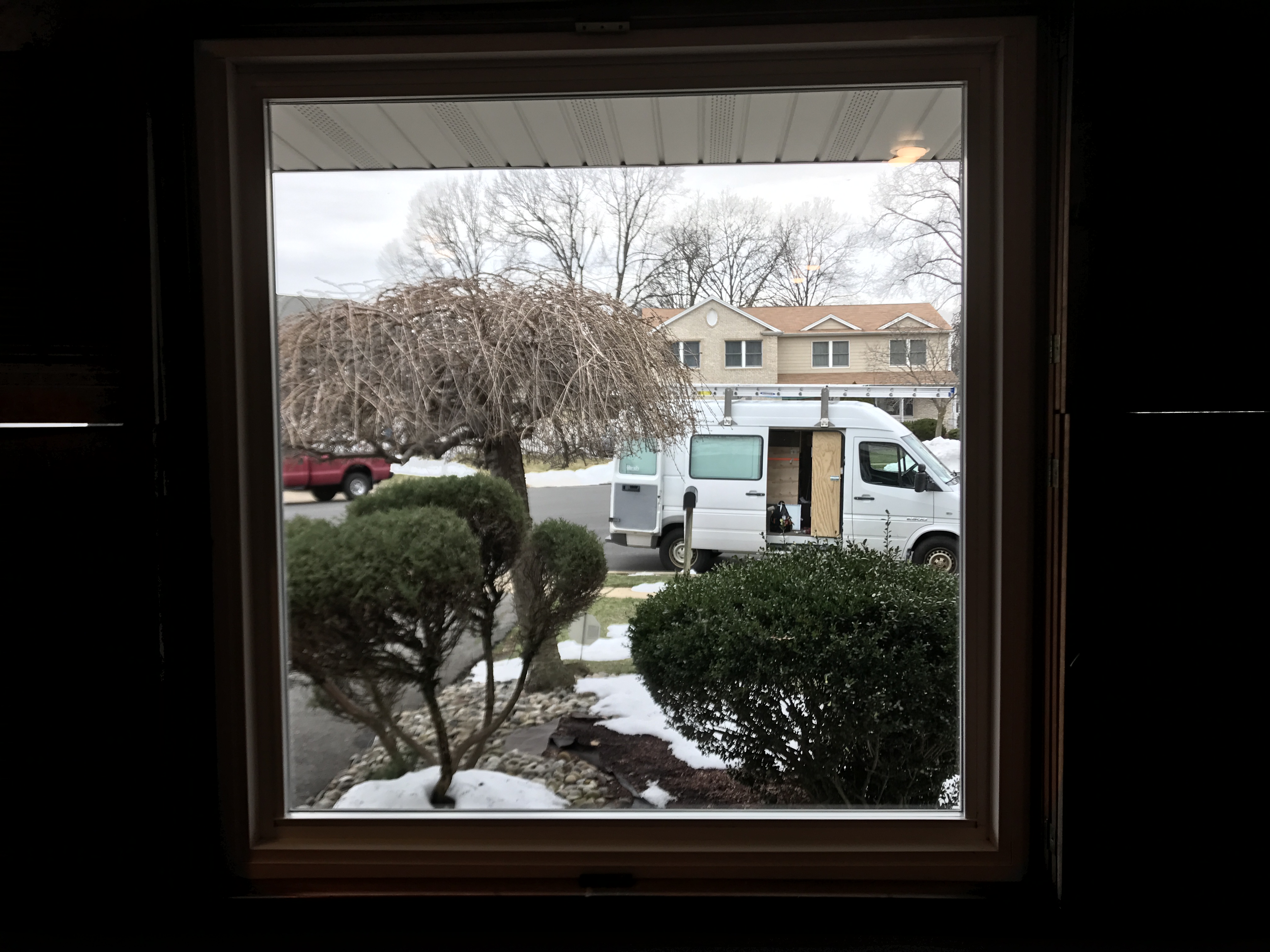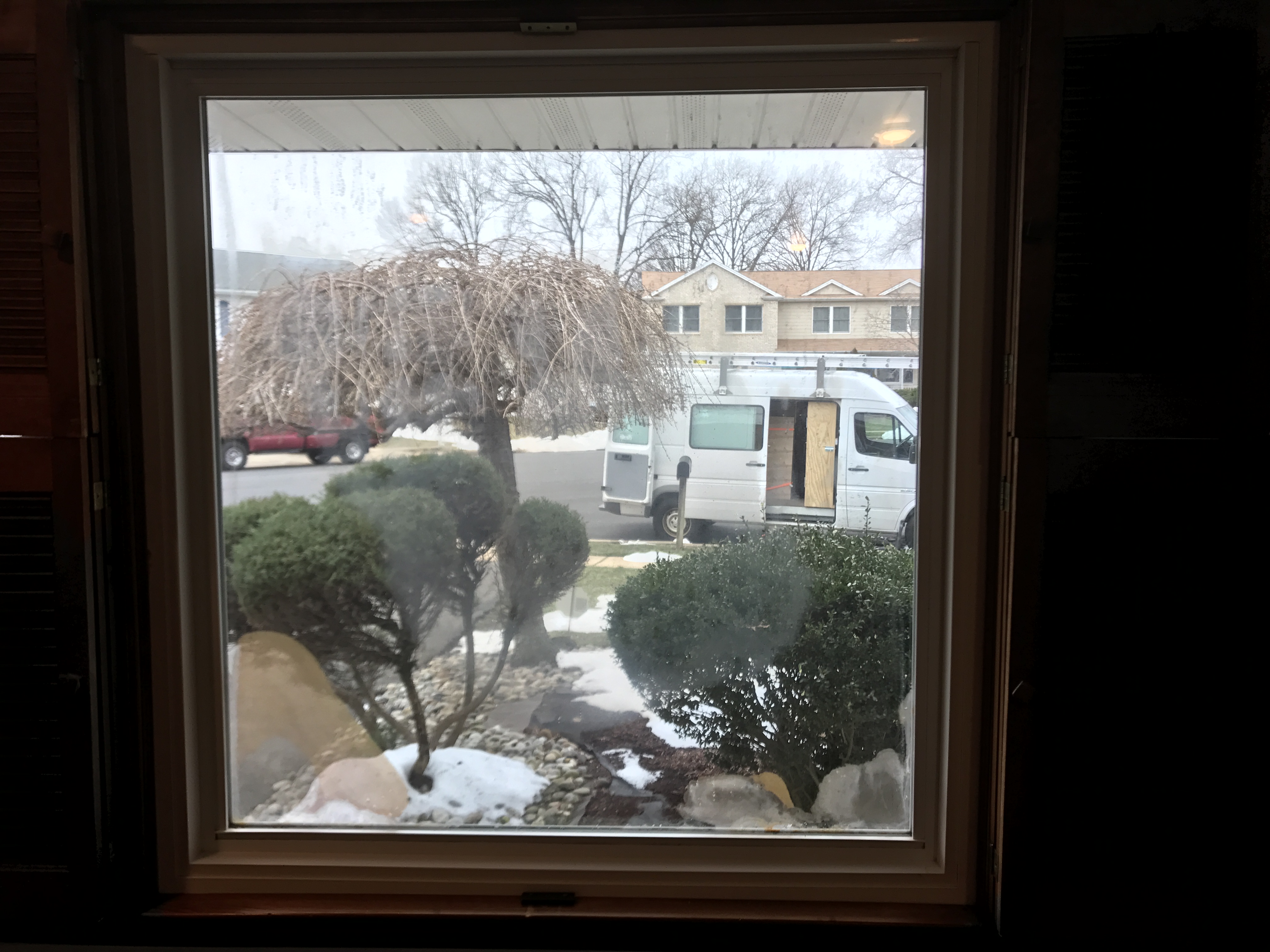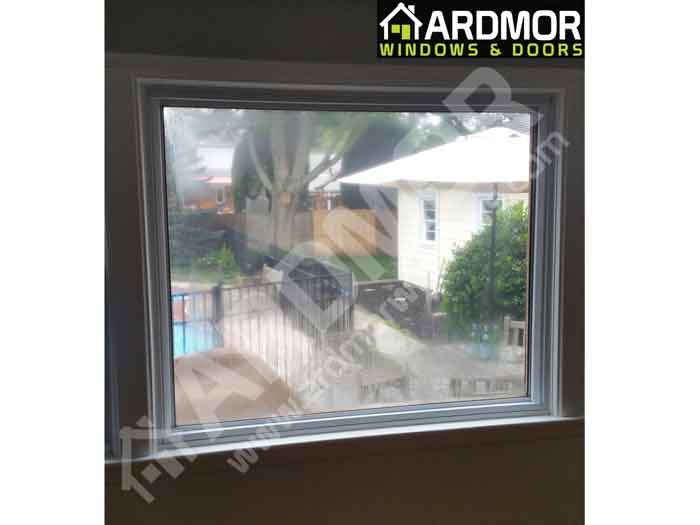This is no way to look out at the world, through a blurry, mottled window. Worse than that, the dirty-looking glass makes the inside of the home look dingy. And even worse than that, the window is no longer providing the insulation necessary to keep the home energy efficient.
An insulating glass unit (IGU) is composed of two panels of glass separated by a spacer and sealed together at the edges. The sealed space between the two panels may be a vacuum or may be filled with a gas (usually argon or krypton). That sealed space in the primary means of reducing heat loss in the winter and heat gain in the summer. It not only makes your home more comfortable and lowers your heating and air-conditioning bills lower, it decreases your energy consumption, a major factor in protecting our environment.
All of that is dependent on the seal. If a seal fails, moist air enters the space between the panes. The moisture evaporates when the weather is warm, then condenses when it is cold. In the above photo, you see the trapped condensation. It isn’t ever going away. It’s only going to get worse.
Seals don’t “blow” easily. They have a heavy load on them and hold up valiantly during the ordinary conditions of extreme temperatures, both high and low; heavy rains beating on the window; winds blowing against the panes, as well the occasional bump from a baseball or myopic bird. Seals hold up in less-than-ordinary conditions, such as a house fire or hurricane-force winds. There are seals that held up when a car struck a home! Sometimes we even contribute, such as when we slam windows shut and rattle the seals. Other times, it’s as simple as seals “aging out.” Or maybe they were not installed properly in the first place. For whatever reason (usually it’s a combination of reasons), a seal breaks away from the glass panes.
During the summer, when the air temperatures outside are warm and, therefore, the glass is warm, you won’t know the seal is broken. As we said, the moisture getting into the space between the panes is evaporating. And then winter comes. The glass is cold, the warm air in your home is trying its best to escape, carrying moist air into the window cavity and, voila!, there’s the condensation (i.e., fog).
The bad news is that seals cannot be repaired or replaced. Even if you could separate the old panes, clean them up and reseal them, which is extremely difficult, if not impossible, to do, the minerals in the air have scratched the glass and it is permanently damaged.
The good news is that you don’t have to replace the entire window. What a relief, right? That’s a terribly expensive proposition, and it feels even worse because companies charge more per window to replace one or a few than to replace every window in the house. Then there is the cost of your time and the inconvenience: the long wait for the replacements, at least several days at home while they are being replaced, moving furniture so that the installers have room to work, putting it back, and the possibly of damage to your home as old windows are taken out and new ones installed.
Replacing the sashes is less expensive than replacing the whole window, but just try to have that done. Even if you know the brand of your windows and who installed them originally, you’ll have a very difficult time finding a company that will do the job. They are in business to install or replace all (or many) of the windows in a home. Their profit margins are not based on replacing a sash now and then.

Foggy Glass Replacement in Montgomery, PA
But fear not, there is an easy, efficient and cost-effective way to have a clear, energy-saving window like the one above: replace the IGU. Our company will come to your home, examine the window and measure the IGU, including the size of the air space. When the new one is ready, we will come back to remove the moldings and the old IGU, install and seal the new one. You have an unblemished view from your window, clean glass that isn’t diminishing your interior décor and the assurance that your home is properly insulated.
When a seal first fails, you won’t know it. As we said, warm temperatures keep the condensation at bay. And there is another reason: The spacer that is holding the two panes of glass apart contains a desiccant material (a substance that absorbs moisture from the air), such as silica gel, calcium oxide, Montmorillonite clay, which keeps the space between the two panes dry. It is not until the desiccant is saturated that the condensation and, therefore, the fogging begins.
Don’t wait for the fog. Ensure that your seals are in tact by conducting an easy investigation:
- Check for light coming through or gaps between the window and the wall and between the sash and the frame.
- Closely examine the panes of glass for signs of moisture.
- Tap on each pane to see if it rattles.
- Make sure that sashes open and close smoothly.
- Dampen your hand and hold it near the seals to see if there is a draft.
- Or hold a lit candle near the seals (best done on windy day). If the flame bends or the smoke drifts, a draft is letting air in or out of your home.
Call us @ 267 – 314 – 7757 to Schedule your Free at Home Consultation.



